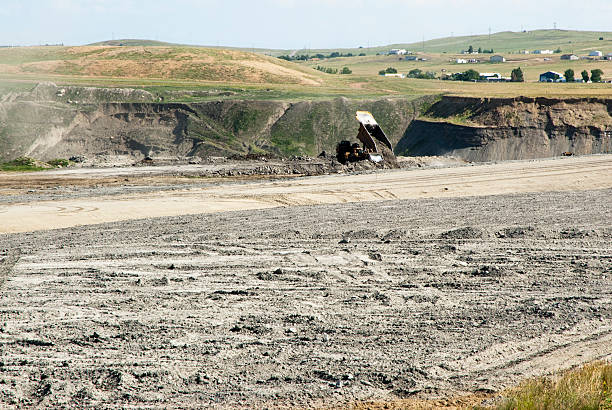Mining operations, while essential for producing raw materials, can often leave behind scars on the land. Once the mining is done, the area needs to be restored—a process called mining reclamation. In simple terms, reclamation means cleaning up the site, improving soil quality, managing water, and sometimes even replanting vegetation. Today, advanced computer tools are making it easier than ever to plan and monitor these restoration efforts. In fact, many experts now turn to mining reclamation analytics to turn raw data into clear, actionable steps that help bring nature back to life.
What Is Mining Reclamation and Why Is It Important?
After a mine has been used, the land can be left with issues such as poor soil, contaminated water, and disrupted ecosystems. Mining reclamation is the process of rehabilitating that land so it can be used again—whether for farming, wildlife, or even new construction. Restoring the environment not only benefits local communities and wildlife but also helps companies meet environmental regulations and improve their public image.
Traditionally, planning these reclamation projects relied on manual surveys and guesswork. However, the modern approach is much more precise. By gathering information on soil conditions, water quality, and even topography, teams can make better decisions about what the land needs to recover.
Using Data to Guide Land Restoration
Advanced computer systems now make it possible to gather and analyze large amounts of data from reclamation sites. Sensors in the field can measure soil moisture, pH levels, and nutrient content. Drones and satellites can capture images that show changes in vegetation and land contours. All this information is combined into an easy-to-read dashboard, giving operators a clear picture of what’s happening on the ground.
When you use mining reclamation analytics, you’re essentially using data to guide every step of the restoration process. For example, if sensors indicate that the soil in one area is too acidic for plants to grow, the system can suggest adding lime or other treatments to balance the pH. In another case, data might show that water is pooling in unwanted areas, signaling the need for improved drainage. This data-driven approach helps teams take quick, effective actions before small issues turn into major problems.
Real-World Benefits of Data-Driven Reclamation
Several generic examples from the industry illustrate how using data can transform reclamation projects:
- Predicting Success: One mining project used computer models to predict how different reclamation techniques would work in a particular area. By analyzing historical data and current sensor readings, they were able to choose the best methods for improving soil quality and promoting plant growth. This not only saved time but also reduced costs by avoiding trial-and-error methods.
- Tracking Progress: Another case saw a mining company set up a digital dashboard that collected data from various sensors across the reclaimed area. The dashboard showed real-time updates on soil moisture, vegetation cover, and water quality. This allowed the team to track progress closely, ensuring that the project stayed on schedule and met all environmental guidelines.
- Meeting Regulations: In many regions, mining companies must meet strict environmental standards. Using data analytics helps them ensure that all necessary tests are conducted and that the reclaimed land meets the required criteria. This proactive approach minimizes the risk of non-compliance and avoids potential fines.
These examples show that when you combine all the data into one clear picture, it’s easier for teams to make informed decisions. The result is smoother projects, healthier restored land, and better outcomes for both the environment and the community.
Simple Tools for Complex Problems
One of the biggest advantages of modern data tools is that they’re designed to be user-friendly—even for those who aren’t data experts. Many reclamation teams can use these systems without needing to learn complicated software. The platforms take in data from various sources, process it using simple algorithms, and then display the results in a way that is easy to understand.
For instance, imagine a digital map of a mining site that highlights areas with poor soil quality using color codes. Green might indicate healthy soil, while red could signal trouble spots. With just a glance, project managers know where to focus their efforts. This kind of simplicity in design helps bridge the gap between high-tech analytics and everyday field work.
Integrating New and Existing Methods
Another big plus is that these analytics tools can work with older systems already in use at many reclamation sites. Instead of overhauling everything, operators can connect existing sensors and equipment to a new digital platform. This means the benefits of data analytics can be enjoyed without massive, expensive upgrades. It’s a practical, cost-effective way to enhance reclamation efforts using the technology already on hand.
The Future of Land Reclamation
Looking ahead, the future of mining reclamation is set to become even more exciting with ongoing advancements in data technology. Imagine digital twins—a computer model that mirrors the actual reclamation site. These models could be used to test different restoration methods virtually before implementing them on the ground. As machine learning and artificial intelligence become more refined, these systems will improve even further at predicting which actions will yield the best results.
In simple terms, by using data analytics, companies can clean up mining sites more efficiently and effectively. They can spot problems early, make smart decisions, and ensure that the land is restored to a condition that benefits everyone. For communities affected by mining activities, this means a healthier environment, improved safety, and new opportunities for land use.
Bringing It All Together
Data isn’t just for big tech companies—it’s a tool that can help us solve real-world problems, like restoring the land after mining. With the help of mining reclamation analytics, even those with limited technical knowledge can understand and contribute to projects that make a big difference. By turning raw data into simple, actionable insights, modern reclamation projects are setting new standards for environmental care and operational efficiency.
Embracing this technology means faster recovery times, lower costs, and a greener future for lands once scarred by mining. The marriage of technology and environmental restoration is proving to be a win-win, benefiting both companies and the communities they serve.




